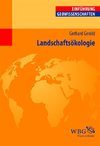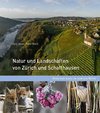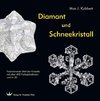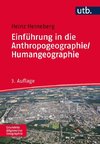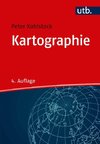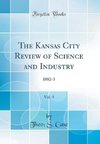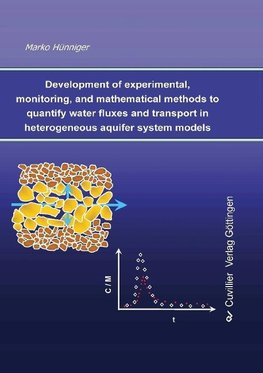
-
 Anglický jazyk
Anglický jazyk
Development of experimental, monitoring, and mathematical methods to quantify water fluxes and transport in heterogeneous aquifer system models
Autor: Marko Hünniger
The present study provides experimental and mathematical methods for the understanding and quantification of the water fluxes and solute transport in heterogeneous layered porous groundwater systems characterised by differences in hydraulic conductivities.
On...
Viac o knihe
Na objednávku, dodanie 2-4 týždne
22.05 €
bežná cena: 24.50 €
O knihe
The present study provides experimental and mathematical methods for the understanding and quantification of the water fluxes and solute transport in heterogeneous layered porous groundwater systems characterised by differences in hydraulic conductivities.
On the one hand, multi-layered porous groundwater systems with different hydraulic conductivities are characterised by a heterogeneous flow field, which causes a heterogeneous mass transport. On the other hand, extreme differences in hydraulic conductivities create regions of immobile water which influence the mass transport. These two different structural heterogeneities - variable hydraulic conductivities and immobile/stagnant water zones - were investigated experimentally in different laboratory aquifer models.
The influence of immobile and stagnant water zones on mass transport was investigated with multi-tracer tests using tracers with different diffusion properties, namely; uranine, bromide, deuterium, oxygen-18 as well as tritium-labelled water, in two-dimensional packed sediment column setups. Two separate column setups were filled. One column setup was filled with clay and sandy material while a second was filled with two different sand sediments. The observed tracer concentration breakthrough curves showed differences in peak concentrations and pronounced tails. Qualitative evaluation of tracer concentration curves led to the assumption that these effects were caused by a diffusive exchange of tracers between immobile and stagnant water regions. The measured data was modelled for the first time in porous media using the Single-Fissure Dispersion Model (SFDM). This model, which was developed for fissured aquifers, yielded a very good fit with all of the tracer concentration curves observed. Further quantitative evaluation of the system parameters (porosities of both materials, diameter of the water¬-bearing layer) in columns consisting of clay and sandy materials produced values that closely matched those independently known. This agreement of parameters confirmed that the model was valid for the heterogeneous systems tested. The model was able to calibrate the tracer curves and to estimate the parameters for the main water-bearing layer for the column consisting of two sandy materials with different hydraulic conductivities. The exchange into the bordering stagnant water occurred via both diffusion and an additional local transport by focusing the flow field into the more conductive material. Thus, in cases where the two materials have rather similar properties, the quantitative evaluation of the parameters of the less permeable layer is only possible when the porosity of that layer is known independently. Both types of experiments with a heterogeneous porous material showed that in groundwater sediments consisting of layers with different hydraulic conductivities the majority of mass is transported in the more conductive layer. The application of the SFDM in porous systems clearly proved that diffusive exchange into regions of immobile or stagnant water is an extremely important factor which has to be quantified. The study clearly demonstrated that multi-tracer experiments modelled with the SFDM are a very useful tool for solving the inverse problem, i.e. for quantifying parameters in such a heterogeneous porous medium.
The influence of the local hydraulic conductivity differences on the flow field and mass transport was additionally experimentally investigated in a multi-layered large-scale indoor aquifer model (480 cm x 80 cm x 70 cm). A hydraulically more conductive layer caused a heterogeneous flow field which was traced by an instantaneous injection of uranine, bromide and tritium labelled water. Tracer observations performed in 2-D (vertical) at a high spatial and temporal resolution resulted in single tracer concentration curves. The tracer concentration curves clearly showed that multi-flow-path effects dominated. It was found that these can be adequately analysed using the Multi-Flow Dispersion Model (MFDM). The qualitative analyses showed that the more conductive sediment layer first focused the flow field, and that the water flux split into three different flow paths after leaving the focusing layer, as to be expected. The quantitative evaluation with the MFDM yielded the parameters of these flow paths. The volumetric water fluxes for flow paths with velocities of 2.7 m/d, 1.9 m/d and 1.3 m/d were estimated to be 55 %, 26 % and 19 % of the total water flux, respectively. It was also found that these flow paths were observed only over very short flow distances. After 2.5 m, all water fluxes characterised by different water velocities joined into one water flux which exhibited the mean water velocity but also showed higher dispersivity. This finding is extremely important for the further evaluation of pollutant migration and biodegradation.
The present study clearly demonstrated that even in complex groundwater systems with a variety of structural heterogeneities the determination and quantification of different flow paths, and/or mobile and immobile water zones is possible by performing multi-tracer experiments using tracers with different diffusion properties, combined with an adequate modelling approach.
- Vydavateľstvo: Cuvillier
- Rok vydania: 2011
- Formát: Paperback
- Rozmer: 210 x 148 mm
- Jazyk: Anglický jazyk
- ISBN: 9783869558400



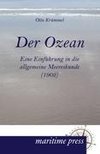
 Nemecký jazyk
Nemecký jazyk 

